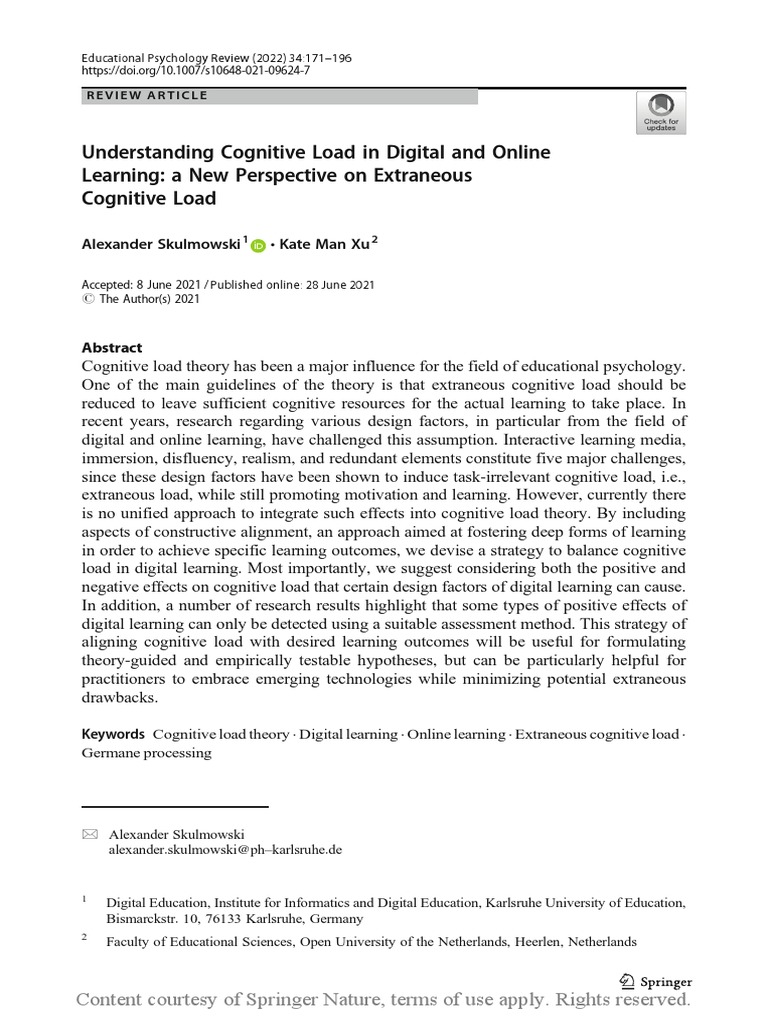
In the digital age, where attention is a scarce resource, the way information is presented can make or break user engagement. Cognitive load management has emerged as a critical concept in UX and web design, focusing on simplifying the user experience to reduce mental effort. As users navigate websites, apps, and digital content, their brains process vast amounts of information, and if this process becomes too demanding, it leads to frustration, abandonment, and poor conversion rates.
This article explores how cognitive load management can be effectively implemented in design to create intuitive, user-friendly experiences that keep users engaged and satisfied. From reducing visual clutter to streamlining navigation, we’ll walk through practical strategies that help minimize mental strain and improve overall usability.
What Is Cognitive Load and Why It Matters
Cognitive load refers to the amount of mental effort required to process information. In the context of UX design, it’s the mental burden placed on users when they interact with a product, whether it’s a website, app, or software interface. When users are overwhelmed by too much information, complex layouts, or unclear navigation, their cognitive load increases, leading to confusion, frustration, and ultimately, disengagement.
There are three main types of cognitive load:
- Intrinsic Load: The natural complexity of the task itself. For example, understanding financial data requires more mental effort than reading a simple blog post.
- Extrinsic Load: Unnecessary distractions or design elements that complicate the interaction. Cluttered layouts, inconsistent navigation, and excessive animations all contribute to this type of load.
- Germane Load: The mental effort used for meaningful learning and understanding. A well-designed interface enhances this by making it easier for users to process and retain information.
Understanding these types helps designers create interfaces that balance mental effort, ensuring users can complete tasks efficiently without feeling overwhelmed.
How Cognitive Load Impacts SEO Performance
Cognitive load isn’t just about user experience—it also plays a significant role in SEO performance. Search engines like Google prioritize sites that provide a positive user experience, which includes fast loading times, intuitive navigation, and clear content. A high cognitive load can lead to higher bounce rates, shorter dwell times, and lower engagement, all of which negatively impact search rankings.
Moreover, as AI-powered search engines become more sophisticated, they’re increasingly capable of assessing user intent and satisfaction. If a site is difficult to navigate or presents information in a confusing manner, it may not rank as well, even if it contains relevant keywords.
By managing cognitive load, you not only improve user satisfaction but also enhance your site’s visibility in search results. This makes cognitive load management a crucial component of modern SEO strategy.
Step-by-Step Implementation Framework
To effectively manage cognitive load in your design, follow this structured approach:
- Define or Audit the Current Situation
- Conduct a usability audit to identify areas where users struggle.
- Use tools like heat maps, session recordings, and analytics to pinpoint friction points.
-
Evaluate the current layout, navigation, and content structure for clarity and efficiency.
-
Apply Tools, Methods, or Tactics
- Simplify Navigation: Use clear labels, logical categorization, and consistent menus to guide users effortlessly.
- Reduce Visual Clutter: Remove unnecessary elements, use whitespace effectively, and highlight key content.
- Streamline Processes: Minimize the number of steps required to complete a task, such as checkout or form submission.
-
Use Familiar Design Patterns: Leverage recognizable icons, buttons, and interactions to reduce the need for user learning.
-
Measure, Analyze, and Optimize
- Track metrics like bounce rate, dwell time, and conversion rates to assess the impact of changes.
- Conduct A/B testing to compare different design approaches.
- Continuously iterate based on user feedback and performance data.
By implementing these steps, you can create a more intuitive and efficient user experience that reduces cognitive load and improves engagement.
Real or Hypothetical Case Study
Consider an e-commerce platform that was experiencing high bounce rates and low conversion rates. Upon analysis, it was found that the site had a cluttered layout, excessive menu options, and long, unstructured product descriptions.
The team implemented the following changes:
– Simplified the navigation menu, reducing the number of top-level categories.
– Used clear, concise product descriptions with bullet points and images.
– Added a streamlined checkout process with fewer form fields.
After these changes, the bounce rate dropped by 25%, and the average session duration increased by 40%. Conversion rates also improved by 18%, demonstrating the tangible benefits of effective cognitive load management.
Tools and Techniques for Cognitive Load Management
Several tools and techniques can help you evaluate and optimize cognitive load in your designs:
- Google Analytics 4 (GA4): Track metrics like bounce rate, session duration, and user behavior flow.
- Hotjar: Use heat maps and session recordings to understand how users interact with your site.
- UsabilityHub: Test visual perception and gather feedback on design elements.
- Hemingway Editor: Assess the readability and clarity of your text.
- Yoast SEO: Analyze the ease of reading and its impact on SEO.
- BrowserStack Live: Test your site across different devices and screen sizes to ensure responsiveness and consistency.
These tools provide valuable insights into user behavior and help identify areas where cognitive load can be reduced.
Future Trends and AI Implications
As AI continues to shape the digital landscape, cognitive load management will become even more critical. Emerging trends like conversational design, voice interfaces, and adaptive UX are already changing the way users interact with technology.
AI-powered chatbots and virtual assistants can help reduce cognitive load by providing instant, personalized assistance. Voice interfaces, such as Alexa and Google Assistant, allow users to interact with systems without the need to read or remember information, further reducing mental effort.
Additionally, neuroscientific design principles are being applied to create interfaces that align with how the human brain processes information. These innovations aim to make digital experiences more intuitive, accessible, and engaging.
As these trends evolve, designers must stay ahead by incorporating AI-driven insights into their cognitive load management strategies.
Key Takeaways
- Cognitive load management is essential for creating intuitive, user-friendly designs that reduce mental effort.
- High cognitive load can lead to frustration, high bounce rates, and poor engagement, negatively impacting SEO performance.
- Implementing strategies like simplifying navigation, reducing visual clutter, and using familiar design patterns can significantly improve user experience.
- Tools like GA4, Hotjar, and UsabilityHub help evaluate and optimize cognitive load.
- Future trends, including AI and voice interfaces, will further transform how we manage cognitive load in design.
By prioritizing cognitive load management, you can create digital experiences that not only meet user needs but also drive engagement, conversions, and long-term success.
Meta Title: Cognitive Load Management — Simplifies Design to Reduce Reader Effort
Meta Description: Learn how to master cognitive load management in design to reduce reader effort, improve engagement, and boost SEO performance.
SEO Tags (5): cognitive load management, user experience design, SEO optimization, cognitive load, UI/UX design
Internal Link Suggestions: [Parameter #1: Search Intent Alignment], [Parameter #7: Semantic Keyword Mapping], [Parameter #13: Evergreen & Fresh Balance]
External Source Suggestions: https://www.nielsen.com/us/insights/article/2023/cognitive-load-and-user-experience/, https://uxdesign.cc/cognitive-load-the-hidden-force-in-user-experience-7a3d6f9c0a8b







